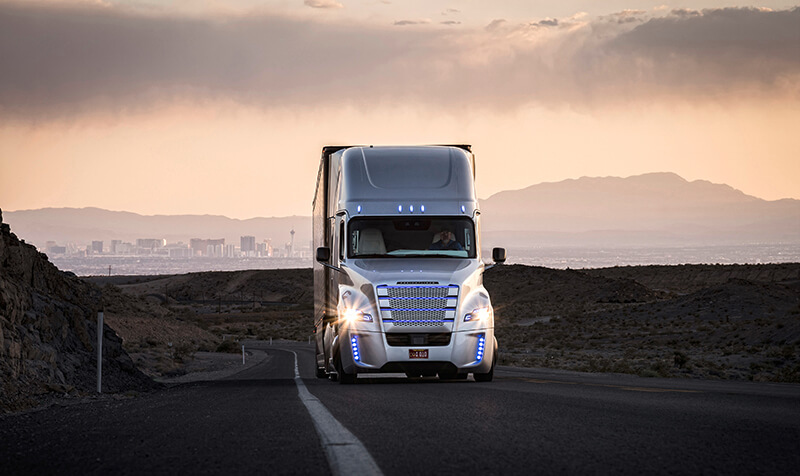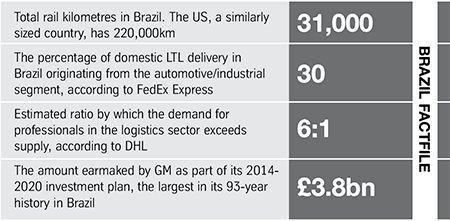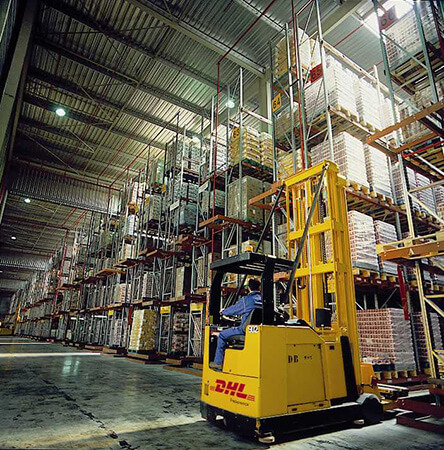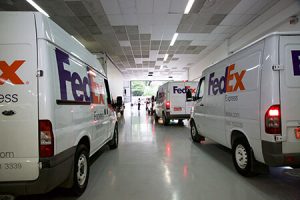 Brazilian vehicle manufacturers are increasingly optimistic that the country can claw its way out of a deep recession. The country is experiencing a period of low inflation, low interest rates, light GDP growth and a tentative recovery in employment, reflected in improving purchasing power and consumer confidence. Moreover, consumers with less debt and renewed access to credit are now contemplating vehicle purchases. Industry experts say this can be seen in the logistics market and is leading to more transported volumes and a flurry of new contracts.
Brazilian vehicle manufacturers are increasingly optimistic that the country can claw its way out of a deep recession. The country is experiencing a period of low inflation, low interest rates, light GDP growth and a tentative recovery in employment, reflected in improving purchasing power and consumer confidence. Moreover, consumers with less debt and renewed access to credit are now contemplating vehicle purchases. Industry experts say this can be seen in the logistics market and is leading to more transported volumes and a flurry of new contracts.
The latest figures from Brazil’s National Vehicle Manufacturers Association (Anfavea), released on March 6, showed that new domestic car and light vehicle sales rose by 18.6% to 327,851 units for the first two months of this year, versus the same period a year ago. Data also shows positive results in other vehicle segments. Truck sales, for example, registered stellar growth of 54.7% year-on-year to 8,601 units in January and February, while bus sales soared 84.4% year-on-year to 1,719 units during the same period.
Anfavea now expects sales to grow almost 12% for 2018 and the mood is cautiously positive. OEMs such as General Motors (GM), Jaguar Land Rover (JLR) and MAN Latin America as well as LSPs such as Penske, DHL and FedEx are shifting gear to meet the rising demand.
The optimism is reflected in investments. Business newspaper Valor Econômico reported that manufacturers plan to invest some $30 billion between 2014 and 2022. Volkswagen (VW) has announced a 7 billion reais ($2.1 billion) investment to launch new vehicles; Toyota will spend 1 billion reais to produce its new Yaris at Sorocaba in São Paulo; Nissan has earmarked 750m reais for its Resende plant in Rio de Janeiro state; and Renault is pumping 750m reais into plant modernisation and the production of aluminium parts.
 Truck and bus manufacturers have also invested. MAN is setting aside 1.5 billion reais through to 2021, Mercedes-Benz has earmarked 2.4 billion reais and Scania hiked its average investment to 520m reais from 100m reais a year for a plant in São Paulo state.
Truck and bus manufacturers have also invested. MAN is setting aside 1.5 billion reais through to 2021, Mercedes-Benz has earmarked 2.4 billion reais and Scania hiked its average investment to 520m reais from 100m reais a year for a plant in São Paulo state.
Fabiano Fração, vice-president of sales at FedEx Express for South America, confirms that the economy shows signs of recovery and that the outlook is positive. “The expectation is that the economy will continue to develop in 2018, starting a new growth cycle. Customers who reduced production of auto parts by 20% and 30% are already seeing a recovery,” he says.
GM positions itself for growthNeuton Karassawa, logistics director for Brazil at GM, says consumer confidence is rising, lifting car sales, and that the OEM is confident of market growth in the next four to five years. “Brazil is emerging from a recession and starting a new growth cycle and expects to sell about 2.5m to 2.7m vehicles this year,” he says.
GM held 18.7% of the market for cars and light vehicles in the first two months of this year, followed by VW (14.89%), Fiat (12.4%), Ford (9.2%), Hyundai (8.8%) and Toyota (8%), according to dealership association, Fenabrave.
"Brazil is emerging from a recession and starting a new growth cycle and expects to sell about 2.5m to 2.7m vehicles this year." - Neuton Karassawa, GM
To handle the coming growth, GM is in the middle of the largest investment plan in its 93-year history in Brazil, having earmarked $3.8 billion for 2014-2020. Investments include portfolio renewal and launching new technologies related to fuel efficiency and connectivity (MyLink and OnStar), plant updates with innovative smart manufacturing technologies (industry 4.0) and new powertrains.
Of the total to be invested, GM will allocate 1.2 billion reais to revamp its plant at São Caetano do Sul in São Paulo’s industrial ABC region, 1.4 billion reais to its Complexo Industrial de Gravataí in Brazil’s southernmost state of Rio Grande do Sul, and 1.9 billion reais to Joinville in Santa Catarina state to produce motors. GM’s Gravataí factory also recently announced that it would recruit 700 workers for a third shift to meet the demand for its Chevrolet Onix and Prisma cars in Brazil and abroad.
According to Karassawa, as well as building cars, GM is also building a culture of efficiency and innovation with suppliers and dealers. As an example, the OEM is implementing an end-to-end solution to link inbound and outbound logistics, and is changing physical inventories for information. “This develops a good relationship with our logistics providers,” he says.
 Furthermore, GM is strengthening partnerships with its current and new suppliers by fostering cost-saving opportunities such as focusing on reducing movement in the value chain and improving quality.
Furthermore, GM is strengthening partnerships with its current and new suppliers by fostering cost-saving opportunities such as focusing on reducing movement in the value chain and improving quality.
Coping with lost capacityWhile the uptick is good news, it is also bringing challenges. Fabrício Orrigo, Penske’s director of sales in Brazil, says the sector is beginning to suffer from cost reductions that were implemented in recent years.
As an example, Orrigo recalls that transport companies were among the most severely impacted during the economic crisis. They were forced to slash their fleets to avoid fixed costs, while some merged with larger competitors and many simply left the business. To makes matter worse, if they wanted to reap the opportunities that remained, they usually had to give rate reductions to customers.
Now that the market is starting to recover, Orrigo is beginning to see the consequences of those actions, and since the end of last year most industries have faced a lack of truck capacity with, consequently, freight rates increased, he says.
But the difficulties do not stop there. According to Mauricio Barros, president of DHL Supply Chain in Brazil, the economy’s precarious infrastructure, heavy and complex taxes and a lack of skilled labour are still obstacles. An international DHL study estimated that demand for professionals in the logistics sector exceeds supply by a ratio of 6:1. “While labour reform and one-off investments in infrastructure are good examples of improvement, more is needed,” he says.
Barros thinks a broader, multimodal operation would certainly boost operational efficiency and speed. In developed countries, much of the long-distance network is made up of rail, while in Brazil it is mainly road. For example, the US – a similarly sized country – has more than 220,000km of rail, while Brazil has only 31,000km.
Trucks on the up as economy grows Roberto Cortes, CEO of MAN Latin America, part of VW’s truck and bus commercial division, says that the automotive sector, especially this segment, is a thermometer for the economy – and the sector has shown a brisk recovery since 2017. “There is a great opportunity for our sales [growth] to reach at least double digits in 2018,” he says. “If it goes really well, growth could even hit 20% in the domestic market and 10% in the export market.”
VW held a 29.8% market share for trucks sales in February, followed by Mercedes-Benz (28.9%), Scania (13%), and Ford (10%). For buses, Mercedes-Benz accounts for 66% of the market, followed by VW (16.4%) and Marcopolo (8.9%).
Importantly for heavy vehicles, most economic sectors are growing, and this will lead to both inbound and outbound logistics growth, while exports will also rise.
[mpu_ad]There is now a need to increase MAN’s logistics activity in terms of staff, warehouses and trucks. MAN works with seven logistics suppliers to provide parts, and uses their trucks. The company also works with logistics providers, such as Júlio Simões Logística, for inbound activities. “We are preparing for higher volumes, but recovering from lower levels, so the inventory is already available. The logistics capacity will be fine,” he says.
Beyond Brazil, MAN is strengthening its exports. Cortes explains that MAN makes products for Brazilian road conditions and then applies these to Mexico, Argentina and other parts of Latin America as well as African nations such as Nigeria. The company ensures its teams understand these needs and can adapt products where needed.
“If we can achieve a 30% market share in Brazil, why should we not achieve this abroad?” he notes. MAN’s top export destinations are Argentina and Mexico, followed by Chile, Columbia and Peru. These economies are growing, so MAN has a chance to leverage its position, Cortes adds.
The luxury of launching a new car plantIn the luxury vehicle market, which accounts for about 3% of the total car market, the picture is also increasingly bright. Frédéric Drouin, JLR’s Latam managing director, says the automotive industry seems to have a positive year ahead.
In a move that will help with the expected growth, in 2016 JLR opened its first wholly owned plant outside the UK, at Itatiaia in Rio de Janeiro state, with the capacity to produce 24,000 units a year. At this factory, Drouin explains, JLR has established a continuous improvement programme with DHL which, he says, has been delivering results in terms of productivity, although he does not disclose details. JLR also introduced a milkrun delivery for local sequenced suppliers, managed by a logistics provider, which improved inventory and achieved cost reductions.

Although JLR can see the economy regaining strength, Drouin points out that it is returning to levels of the past five years or so, which means that logistics adjustments are already in place. Therefore, the company stands ready to support the forecast production, given the expected economic performance in the coming months. “We have room for economic growth with our current plant structure,” he says.
Government switches development schemesAccording to Penske’s Orrigo, imports grew at the beginning of this year and should continue throughout the year due to the end of the Inovar-Auto programme. This scheme to stimulate domestic production, implemented by a decree in 2012, elevated taxes by 30% on imported vehicles (with exceptions for those produced in Mercosul or Mexico). This legislative change helped imports to rise 27% for the first two months of this year, according to Anfavea.
GM’s Karassawa agrees that Inovar-Auto was instrumental in defining the framework for the investment cycle of the automotive industry in 2012-2017 and contributed decisively to the sector’s enormous technological leap.
The government is now establishing new regulations to help the sector. Penske’s Orrigo says that after the end of the Inovar-Auto programme, the government announced its new Rota 2030 plan that should be implemented in three cycles of five years, each covering eight ‘pillars’. These pillars will help suppliers to recover, develop local technology, secure gains in energy efficiency, resolve tax issues, as well as improve R&D, security, labour relations and logistics. Cortes notes that Rota 2030 is a comprehensive plan to allow the Brazilian production channel to benefit from the opening up of the economy. “This is mandatory for the sector,” he says.
Drouin adds that the government’s investment in infrastructure will be important and should help to ease bureaucracy, with the Single Import Declaration being another example, he notes.
LSPs implement innovative technologyDHL Supply Chain, with more than 9,000 employees across 59 distribution centres throughout Brazil, works for large automakers and certain suppliers for distribution, warehousing and aftersales logistics services. Through DHL’s network, made up of outsourced and autonomous suppliers, as well as individuals with self-owned vehicles, the company provides transport services for parts.
 GM is in the middle of the largest investment plan in its 93-year history in Brazil; some of the $3.8 billion for 2014-2018 will go on plant upgrades
GM is in the middle of the largest investment plan in its 93-year history in Brazil; some of the $3.8 billion for 2014-2018 will go on plant upgradesRegarding innovation, DHL is starting to use drones for surveillance and stock-checking processes in distribution centres, as well as collaborative robots, big data, and self-guiding equipment in its operations. In parallel, to support innovation, it is approaching start-up companies and entrepreneurs via partnerships with Weme, in Campinas city in São Paulo state, and Endeavor.
Mauricio Barros explains that innovation projects in full operation include using two electric cars for consumer goods distribution in Campinas and the Greater São Paulo region for a multinational, as well as a multi-client packaging centre that uses 3D printing and scanner technologies along with robots to produce packages for promotional kits.
Among the actions carried out, DHL has increased its self-owned fleet, acquired Polar Transportes, which specialises in medicines, and established a control centre and eight cross-docking hubs in strategic locations across the country.
Other LSPs are also betting on technological advances. When the country’s economic crisis started, Penske’s Orrigo recalls that the company was evaluating a new transport management system (TMS). However, Penske had to make the decision to move forward or not during tough economic conditions and a harsh political climate. “Rather than putting investments on hold, Penske decided to move forward given [that] we believed the crisis was cyclical, and we invested in a new tool to sell in the market once it recovered,” he says.
As a result, on March 1, Penske kicked off its new TMS platform, which helps to plan shipments, find the most efficient routes and manage carrier networks. The set of tools begins when Penske receives orders and performs all of the transport planning – analysing different parameters and defining the most cost-effective solution, based on routes and load optimisation. The platform also interacts with carriers on load tendering/offering, while supporting tracking activities and providing visibility to customers through satellite tracking and mobile devices. Penske also invested in its entire transport structure, from the relationship team with carrier partners through to a new control tower where it can manage transport activities.
Given the changes, Penske will also focus on transport operations this year, regarding execution and value-added services such as routing, optimisation and visibility tools. Besides transport, it is investing in engineering capabilities, searching for innovation and 'out of the box' solutions for clients, Orrigo says.
 FedEx’s integration of TNT is expected to result in an extra 6,000 employees, 1,500 vehicles and 120 distribution centres in Brazil
FedEx’s integration of TNT is expected to result in an extra 6,000 employees, 1,500 vehicles and 120 distribution centres in BrazilFedEx merger takes offFração at FedEx Express says that the automotive/industrial segment accounts for more than 30% of domestic less-than-truckload (LTL) delivery in Brazil.
FedEx, which currently has a fleet of more than 1,000 vehicles covering 5,300 cities and more than 50 outlets, has a dedicated aircraft that makes four-weekly flights from Campinas to Memphis in the US. TNT Brazil also operates international road services between Brazil, Argentina, Colombia, Uruguay, Paraguay and Bolivia.
[related_topics align="right" border="yes"]In particular, with the global acquisition of TNT in 2016, Fração explains that FedEx is positioning itself for global growth, including in Latin America. The integration of TNT into FedEx in Brazil will begin in the second quarter of 2018. By the time it is fully integrated, the company will have an extra 6,000 employees, more than 1,500 vehicles, and 120 stations and distribution centres in the region.
Indeed, some projects have already been completed, such as the migration of domestic pick-ups and deliveries to direct services provided by FedEx or TNT instead of using third parties. Also, TNT’s international shipments are now delivered and picked up by FedEx in São Paulo.
Fração is confident that FedEx Express will be an even stronger player. “We are poised for continued growth, and equipped with a robust value proposition for SMEs and large enterprises based in the country,” he says.
As noted, Fração is not the only one who believes that things are getting better in Brazil. GM’s Karassawa says that sales have been improving and the market should continue to grow, noting that the Onix has been the bestselling car in Brazil and South America since 2015. He concludes: “GM believes there is room to produce more, but this will all depend on the market’s evolution.”
Topics
- Anfavea
- Brazil
- DHL
- DHL Supply Chain
- Digitalisation
- FCA
- features
- Fedex
- Fedex
- Fenabrave
- Finished Vehicle Logistics
- Ford
- Ford
- GM
- GM
- Hyundai
- Hyundai Kia
- Inbound Logistics
- Inventory management
- JLR
- JLR
- Júlio Simões Logística
- MAN
- Marcopolo
- Mercedes-Benz
- Nissan
- Nissan
- OEMs
- Packaging
- Penske
- Polar Transportes
- Policy and regulation
- Rail
- Renault
- Renault
- Renault-Nissan
- Road
- scania
- Service Part Logistics
- South America
- Stellantis
- Supply Chain Planning
- TNT
- Toyota
- UPS
- Volkswagen
- VW

























![Global[1]](https://d3n5uof8vony13.cloudfront.net/Pictures/web/a/d/s/global1_726550.svgz)












